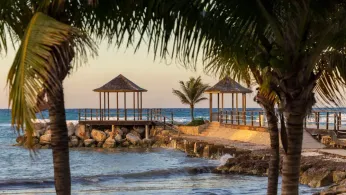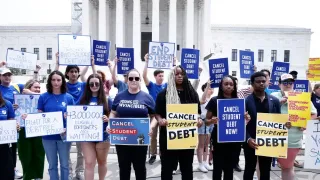
7 hours ago
Jamaica Rushes to Prepare for Peak Tourism Season As It Digs Out From Hurricane Melissa
John Myers, Jr. READ TIME: 3 MIN.
Jamaica’s peak tourism season is one month away, and officials in the hurricane-ravaged nation are rushing to rebuild from the catastrophic Category 5 storm that shredded the island’s western region.
Before Hurricane Melissa hit on Oct. 28, the government expected Jamaica’s tourism industry to grow by 7% this winter season and was preparing to welcome an estimated 4.3 million visitors.
Now, officials are scrambling to repair hotels and clear debris in the western half of the island in hopes of securing tourist dollars at a moment when they’re needed the most.
“We are still doing our assessments, but most of the damage was in the northwest and southwest,” said Christopher Jarrett, who leads the Jamaica Hotel and Tourist Association.
He noted that the popular Negril area in Westmoreland was spared major damage.
All international airports in Jamaica have reopened and are receiving commercial flights. But almost a week after one of the most powerful Atlantic hurricanes on record struck the western end of Jamaica, tourism officials were still trying to get a true picture of the damage to the sector — a mainstay of the island’s economy.
Jarrett said the lobby group that represents private hotels and attractions on the island is still unable to reach many of its members, especially in the western parish of Hanover, as communication and electricity services were down.
“Every individual member who was affected is doing everything to get back up and running,” he said.
In recent days, Tourism Minister Edmund Bartlett said he expected Jamaica’s tourism sector to be back to normal by Dec. 15, the start of the island’s peak tourism season.
“It’s doable for some and not for others,” Jarrett said of the timeline, pointing out that the larger hotel chains would be able to recover quicker.
Jarrett, who operates the family-owned Altamont Court Hotel that has properties in Kingston and Montego Bay, said only one property in Montego Bay sustained roof damage and that repairs were underway.
Despite the disruption to the important tourism sector, Jarrett said he doesn’t expect the economic fallout to be significant. He said many hotels in the capital of Kingston and in the northern coastal town of Ocho Rios were gaining business from the influx of aid workers and volunteers in the hurricane’s aftermath.
“Right now, we’re giving discounts, between 25% and 50%, and some (hotels) are giving complimentary stays as well,” Jarrett said.
Tourism is Jamaica’s main source of foreign exchange earnings, contributing a combined 30% to gross domestic product directly and indirectly. It employs an estimated 175,000 people and is a major economic driver for other sectors in the Jamaican economy, such as construction, banking and finance, utilities and agriculture.
The disruption to the tourism sector also is affecting many providers of goods and services.
“With some of the hotels closed and most of the tourists gone, many of us are left without work. This storm didn’t just destroy buildings; it shattered jobs and incomes for many of us and our families,” said Patricia Mighten, who works in the western parish of Hanover as a hotel housekeeper.
Desrine Smith, a craft vendor who plies her trade in the resort town of Falmouth in the northwestern parish of Trelawny, echoed those sentiments.
“Going days without tourists coming to buy anything means no sales and no money. We survive on daily earnings, and now everything is uncertain,” she said. “The hurricane has impacted our pockets hard.”
The government announced Monday that the death toll increased to 32 and is expected to keep rising.
Crews are still trying to access 25 isolated areas in western Jamaica as helicopters continue to drop food for them. Nearly half of all power customers remain without electricity.






